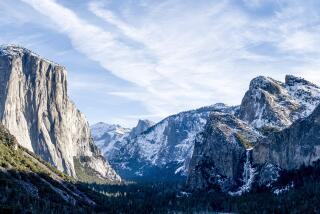Series of earthquakes hits near California-Nevada border

Earthquakes occur all over the world, mostly around plate edges, on faults. Here are three things to keep in mind to ensure safety in an earthquake.
- Share via
A series of moderate earthquakes rocked the California-Nevada border Wednesday, shaking residents in both states but producing no reports of major damage or injury.
The first temblor, with a magnitude of 5.7, occurred at 12:22 a.m. near Hawthorne, Nev. It was followed by a second 5.7 quake and then more than 100 aftershocks.
Light shaking was felt as far away as South Lake Tahoe, Fresno, Visalia and Merced.
The U.S. Geological Survey said most of the responses to its “Did You Feel It?” website came from the Central Valley and Sierra Nevada. But residents reported they felt the quakes as far west as San Francisco and as far south as Bakersfield.
On social media, those near the first quake reported a sharp jolt. The epicenter was in a fairly remote, scarcely populated area of Nevada away from larger population centers in Reno and Lake Tahoe. Hawthorne has a population of about 3,300.
Hours later, temblors continued near Hawthorne, with four quakes between magnitude 2.8 and 4 occurring after 4 a.m. A magnitude 3.5 quake was reported at 6:45 a.m.
As the morning progressed, the smaller and less frequent aftershocks continued.
The California Office of Emergency Services said it was assessing the situation, but there were no reports of serious injuries or damage.
According to the USGS, the 5.7 quake’s epicenter was 56 miles from Gardnerville Ranchos, Nev., 69 miles from South Lake Tahoe, Calif., 70 miles from Carson City, Nev., and 84 miles from Fernley, Nev.
Seismologist Lucy Jones said on Twitter that multiple quakes like Wednesday morning’s are not uncommon in the region. She noted that in 1980, Mammoth Lakes experienced several quakes in the magnitude 6 range in one day. That swarm of quakes, which lasted several days, became the subject of much research.
Jones said a bigger quake was possible but increasingly unlikely.
“They could be foreshocks but [it’s] much more likely that we’ve already seen the largest. Sequence decaying normally,” she wrote on Twitter.
In the last 10 days, there have been eight earthquakes of magnitude 3.0 or greater centered nearby.
Another significant earthquake shook northwest California earlier this month. On Dec. 6, a magnitude 6.5 quake occurred off the coast of Eureka. That quake caused no damage.
Later Wednesday morning, a 4.1 quake occurred in the Morongo Valley in the Inland Empire.
Read more about Southern California earthquakes.
ALSO
7.7 magnitude quake hits off the coast of Chile, triggering tsunami alert
Gravity signals may provide a little extra warning before an earthquake strikes
How strong is ‘disaster culture’ in earthquake-prone L.A.?
UPDATES:
10:50 a.m.: This article was updated with a magnitude 4.1 quake reported in Morongo Valley.
9:20 a.m.: This article was updated with more details about aftershocks.
7:40 a.m.: This article was updated from comments from seismologist Lucy Jones.
7:05 a.m.: This article was updated with more details and reports of additional quakes.
5:07 a.m.: This article was updated with a fourth quake occurring after 4 a.m.
4:38 a.m.: This article was updated with a report of three additional quakes.
This article was originally published at 1:55 a.m.
More to Read
Sign up for Essential California
The most important California stories and recommendations in your inbox every morning.
You may occasionally receive promotional content from the Los Angeles Times.










